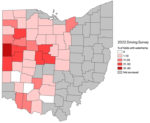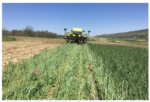Advertise Follow Us
Items Tagged with 'waterhemp'
ARTICLES
5% Makes a Big Difference in Waterhemp Control
Escapes go a long way toward decreasing corn yields & add to herbicide-resistance woes in the long run
Read More
Scout for Palmer Amaranth & Waterhemp to Prevent Spread with Combine
Make plans now to prevent the spread of herbicide-resistant weeds.
Read More









